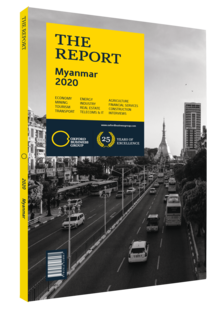Myanmar prepares for rollout of 5G services
Myanmar has enjoyed one of the most rapid and successful deployments of telecommunications infrastructure around the world, in part due to a regulatory framework that allows multiple operators to share the use of cell towers. This has ensured building and maintaining infrastructure is cost effective for the companies involved, as they can on-board additional tower tenants at close to zero cost.
Lay of the Land
Investment in telecoms infrastructure continues apace. In mid-2018 there were more than 14,500 towers in Myanmar, with some estimates putting the figure at 20,000. A further 8000-9000 towers may be required to meet demand for smartphone data services. Tower ownership – currently distributed among more than a dozen companies – is consolidating after foreign investment restrictions in the sector were eased. In late 2018 US private equity firm TPG, which is the majority owner of Myanmar’s second-largest telecoms tower company, Apollo Towers, acquired Pan Asia Majestic Eagle, the fourth-largest player. At the same time the US government’s development finance institution, Overseas Private Investment, committed over $250m to Apollo Towers to finance the construction of over 1800 towers. Despite the combined assets, TPG remains the country’s second-biggest tower owner, after Irrawaddy Green Towers, which maintained its leading position through the acquisition of TPR Myanmar’s infrastructure in April 2019.
In April 2019 Telenor Myanmar, a subsidiary of Norway’s Telenor Group, announced that it had extended 4G coverage to 307 out of 330 townships, with the addition of more than 6100 LTE sites. Some 856 new sites were added in the first quarter of 2019, with plans to bring the total to more than 1100 by mid-2019.
Myanmar’s Universal Service Fund aims to pool capital via a 2% levy on the revenue of Myanmar’s four telecommunications companies to fund the extension of telecoms services in rural areas. U Zaw Min Oo, chief external relations officer at mobile operator Mytel told local media that the company’s focus on 4G networks made operating in rural areas challenging. “We are interested in [extending services to] some townships but it is difficult to compete in others because they have no electricity, so we have to use generators,” he said. “It is not feasible to use solar in the long term. If we use generators, it is difficult to supply diesel fuel.”
5G Future
Myanmar is gearing up for the rollout of 5G services nationwide, which have the potential to produce breakthroughs in socio-economic development by fostering digital evoution in industries such as agriculture, health and manufacturing. The transition hinges on the rollout of a strategy that effectively incentivises companies to take on the high cost of 5G network development. 5G technology requires denser coverage of smaller cell towers than 4G, which would mean additional large-scale investment if operators are to offer services across the country. Moreover, heavier data traffic requires corresponding investment in backhaul-fibre connections, requiring the government to direct policy on a number of fronts if it is to successfully foster a 5G ecosystem.
The government will likely require 5G licence holders to offer coverage nationwide, but this will present serious challenges, and only Myanmar’s major cities would be profitable in the near term. Other challenges to a 5G rollout include an immature handset ecosystem, although it is only a matter of time before 5G compatible devices are commonplace.
Myanma Posts and Telecommunications Department, the industry regulator, intends to hold a multi-band 5G spectrum auction early in 2020, before releasing further bandwidth as the market matures, and reallocating spectrum currently dedicated to legacy code-division multiple access systems – that is, 2G and 3G wireless communications – on their expiry in 2023. Critically, the 3.5-GHz band that offers one of the best combinations of coverage and capacity will be auctioned in two lots to encourage competition.
You have reached the limit of premium articles you can view for free.
Choose from the options below to purchase print or digital editions of our Reports. You can also purchase a website subscription giving you unlimited access to all of our Reports online for 12 months.
If you have already purchased this Report or have a website subscription, please login to continue.

